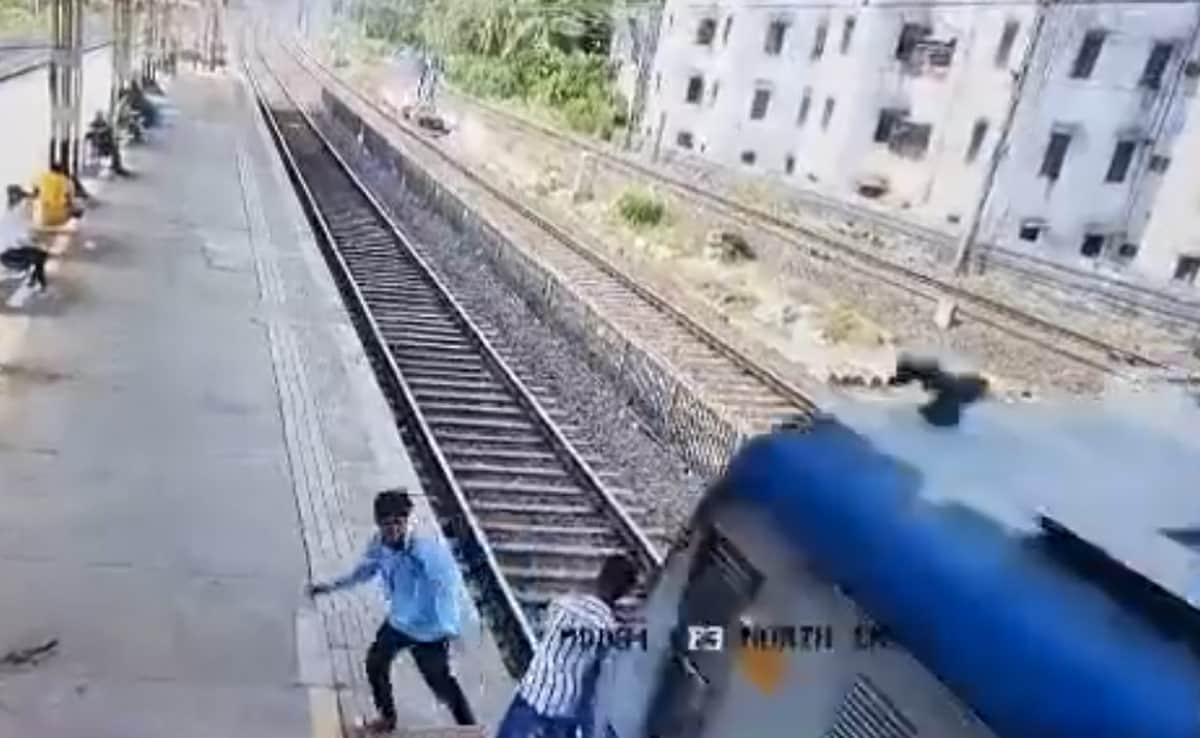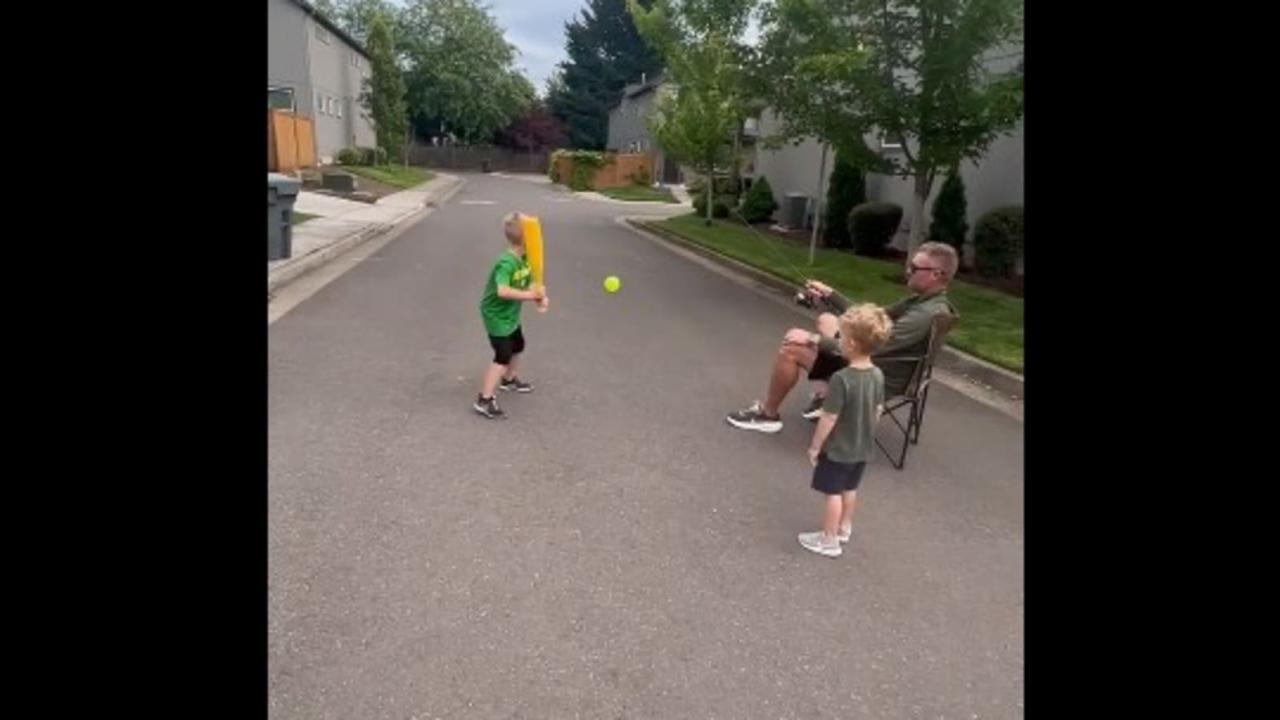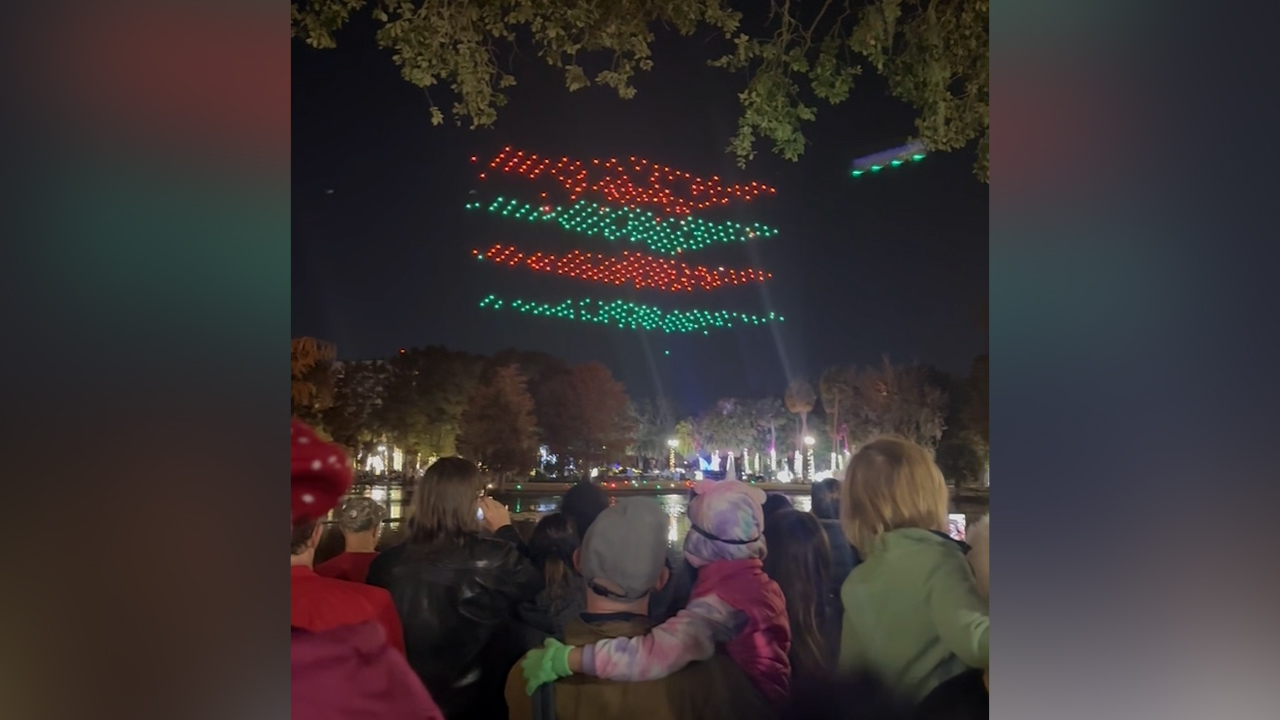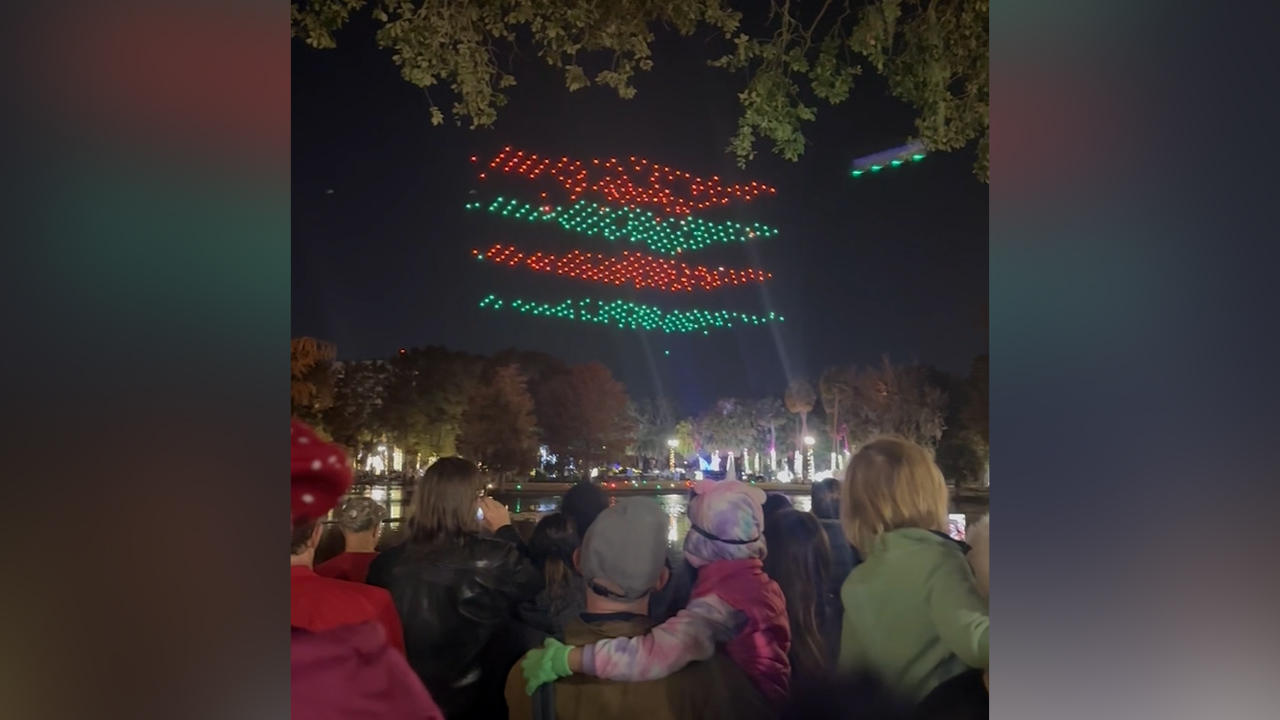Boy hit by drone – it sounds like a science fiction nightmare, but sadly, it’s a growing concern. This incident highlights the urgent need for better drone safety regulations and public awareness. We’ll explore the potential causes, the resulting injuries, and what steps can be taken to prevent future tragedies. We’ll also delve into the legal and ethical implications for drone operators and discuss technological solutions to make the skies safer for everyone.
From examining the different types of drones involved – their size, weight, and features – to understanding the potential legal ramifications for operators, this investigation aims to provide a comprehensive overview of this serious issue. We’ll look at existing safety regulations, potential loopholes, and explore how technological advancements like obstacle avoidance and geofencing can help mitigate risks. Ultimately, we aim to foster a discussion about responsible drone ownership and promote safer skies for all.
A Boy Hit by a Drone: Understanding the Risks and Implementing Solutions

The increasing popularity of drones presents both exciting possibilities and significant safety concerns. One particularly alarming scenario is a drone striking a person, as illustrated by the hypothetical case of a boy injured by a falling drone. This article explores the various aspects of such an incident, from the immediate aftermath to the long-term legal and ethical implications, and proposes solutions to prevent future occurrences.
The Incident: Describing the Event
Several scenarios could lead to a boy being hit by a drone. A malfunctioning drone could lose control, a drone could be flown recklessly near populated areas, or a drone could be struck by another object, causing it to fall unpredictably. The type of drone involved significantly impacts the severity of the incident. Larger, heavier drones, such as those used for photography or delivery, pose a greater risk of serious injury than smaller, lighter drones.
Features like faulty propellers, inadequate battery life, or a lack of GPS stabilization increase the likelihood of accidents.
A boy getting hit by a drone is a scary thought, right? It highlights the potential dangers of even small drones. This kind of incident makes you think about larger-scale events, like the one described in this article about a drone show accident , where things can go wrong on a much bigger scale. Understanding the risks involved, whether it’s a single drone or a whole show, is crucial for safety.
Ultimately, preventing accidents, no matter the size, should be the top priority.
Injuries sustained could range from minor scrapes and bruises to severe head trauma, broken bones, or even death. The impact force, the drone’s weight, and the area of the body struck all play a role. Imagine a ten-year-old boy, engrossed in a game of catch, when a sudden whooshing sound fills the air, followed by a sharp blow to his head.
The drone, a large quadcopter weighing several pounds, tumbles to the ground, leaving him dazed and bleeding.
A boy getting hit by a drone is a scary thought, highlighting the potential dangers of these increasingly common devices. It makes you think about larger-scale incidents, like the one described in this article about a drone show crash , which underscores the importance of safety regulations and proper drone operation. Accidents, whether involving a single drone or hundreds, remind us that responsible drone use is crucial to prevent injuries.
Immediately after the impact, chaos ensues. Screams and shouts fill the air. The boy lies on the ground, clutching his head, while onlookers rush to his aid. Someone calls emergency services, while others try to comfort the frightened child. The drone, a mangled mess of plastic and metal, lies nearby, a stark reminder of the incident.
Safety Regulations and Drone Operation

Numerous regulations govern drone operation, especially near populated areas. These often include restrictions on flight altitude, speed, and proximity to people. Specific regulations vary by country and region, and many jurisdictions require registration and licensing for drone operators. However, enforcement can be inconsistent.
- Many jurisdictions mandate maintaining visual line of sight with the drone at all times.
- Flight restrictions exist near airports and other sensitive areas.
- Weight and size limits may apply in certain zones.
- Operators are generally responsible for any damage or injury caused by their drones.
Safety features vary widely across drone models. Some drones incorporate obstacle avoidance systems, GPS tracking, and automatic return-to-home functions. However, even the most advanced drones are not foolproof. Improvements such as enhanced sensor technology, improved GPS accuracy, and fail-safe mechanisms could significantly reduce the risk of accidents. Responsible operation involves pre-flight checks, awareness of surroundings, and adherence to all applicable regulations.
Despite existing regulations, loopholes remain. Enforcement can be challenging, particularly in areas with limited surveillance. The increasing accessibility of drones also presents a challenge, as more individuals operate them without adequate training or awareness of safety protocols.
Legal and Ethical Implications

The legal ramifications for drone operators involved in accidents can be severe, potentially leading to criminal charges, fines, and civil lawsuits. Victims or their families may pursue compensation for medical expenses, lost wages, pain, and suffering. The level of negligence determines the severity of legal consequences.
News of a boy being hit by a drone is pretty scary, highlighting the safety concerns surrounding drone technology. Understanding where these deliveries are happening is key to understanding the risks; check out this map of amazon drone delivery locations to see the areas currently using drone delivery. Knowing these locations helps us better assess potential hazards and advocate for safer drone operations, especially for those on the ground.
| Negligence Level | Potential Criminal Charges | Potential Civil Liability | Example Sentence/Settlement |
|---|---|---|---|
| Reckless Operation | Negligence, Reckless Endangerment | Significant damages, punitive damages | Jail time, substantial financial penalties |
| Gross Negligence | Assault, Battery, potentially manslaughter | Very high damages, punitive damages | Lengthy prison sentence, millions in damages |
| Simple Negligence | Minor infractions, warnings | Damages related to direct costs | Fines, cost of repairs/medical bills |
| No Negligence (Product Failure) | None | Potential product liability claim against manufacturer | Compensation for injuries from manufacturer |
Ethically, responsible drone usage in public spaces is paramount. Operators must prioritize the safety of others and adhere to a code of conduct that minimizes risks. A hypothetical court case might involve expert testimony on drone operation, accident reconstruction, and the operator’s adherence to regulations.
Public Awareness and Education

A comprehensive public awareness campaign is crucial to educate the public about drone safety. This campaign should target diverse age groups, using various media platforms and educational materials. For younger audiences, engaging videos and interactive games could be effective, while older audiences might benefit from detailed informational pamphlets and online resources.
- Promote responsible drone ownership and operation through public service announcements.
- Develop educational materials tailored to different age groups.
- Organize workshops and seminars on safe drone operation.
- Highlight the potential risks associated with improper drone use.
Recommendations for safe drone operation near children include maintaining a safe distance, avoiding crowded areas, and always keeping the drone within visual line of sight. Prioritizing responsible drone ownership fosters a safer environment for everyone.
Technological Solutions and Prevention, Boy hit by drone
Technological advancements can significantly enhance drone safety. Obstacle avoidance systems using sensors like lidar and radar are already available on some drones, but further development is needed to improve their reliability and accuracy. Advanced sensor technologies, capable of detecting and tracking moving objects, could further mitigate risks. Geofencing technology, which restricts drone flight to designated areas, could prevent drones from entering restricted zones.
- Improved obstacle avoidance systems using multiple sensor types.
- Enhanced GPS accuracy and fail-safe mechanisms.
- Integration of AI for autonomous risk assessment and response.
- Wider implementation of geofencing technology.
Illustrative Examples
An illustration of a drone accident might depict a brightly colored quadcopter falling from the sky, its propellers spinning wildly, striking a young boy playing in a park. The boy’s startled expression, the scattered toys around him, and the debris from the drone create a powerful visual representation of the potential consequences of irresponsible drone operation.
A visual representation of safe drone operation would show a drone flying at a safe altitude, far from people, with the operator maintaining visual contact and adhering to all safety protocols. The scene would be calm and peaceful, highlighting the responsible use of drones.
A drone with advanced safety features might be depicted with multiple sensors, flashing lights, and a clearly visible “no fly zone” indicator. The sleek design and advanced technology would visually communicate the enhanced safety capabilities of the drone.
Closing Summary: Boy Hit By Drone
The incident of a boy being hit by a drone underscores the critical need for a multi-pronged approach to drone safety. This includes stricter regulations, improved drone technology, and a significant increase in public awareness. By understanding the potential dangers and implementing preventative measures, we can work towards a future where drone technology benefits society without jeopardizing public safety, especially the safety of our children.
Let’s make sure the skies remain a safe space for everyone.
Question & Answer Hub
What are the common causes of drone accidents involving children?
Common causes include operator error (lack of awareness of surroundings, poor control), malfunctioning drones, and inadequate safety regulations.
What kind of compensation can a family expect after such an incident?
Compensation depends on the severity of injuries, the level of negligence proven, and the applicable laws. It could include medical expenses, lost wages, and pain and suffering.
Are there any specific insurance policies for drone operators to cover such incidents?
Yes, many insurance providers offer liability coverage specifically for drone operators. It’s crucial for operators to have adequate insurance to cover potential damages or injuries.
How can parents protect their children from drone accidents?
Educate children about drone awareness, supervise them in areas where drones may be present, and report any unsafe drone activity.
